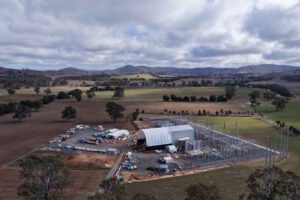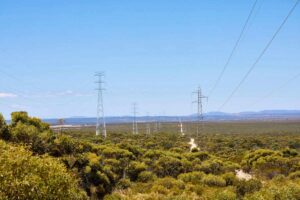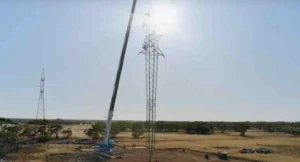The latest piece of enormous kit to build out Australia’s transmission infrastructure upgrades required a 128 wheel trailer built in France and a 900km journey to move it from Port Adelaide to Buronga in NSW.
Normally, that trip is just under 400km.
But this piece of kit weighs 374 tonnes and needed a more circuitous route that avoided roads with lighter weight limits and bridges.
It’s the country’s first 330 kV Phase Shifting Transformer (PST), which controls the flow of active power on transmission networks.

It’s the first of five, with the remaining four to arrive between December this year and January 2024, along with two synchronous condensers and four shunt reactors to make one of the biggest substations in the southern hemisphere, says owner Transgrid.
The Buronga substation will be the main hub connecting Wagga Wagga in NSW to Robertstown in South Australia, with a connection to Red Cliffs in Victoria, on the new 700km EnergyConnect transmission line.
The $1.8 billion piece of infrastructure saw the first towers erected in March, also at Buronga. It is expected to unlock a swathe of exports from wind and solar projects that are currently curtailed in the solar triangle around Mildura and therefore remove the need for more power from gas and coal generators.
The project is slated for first power from mid to late 2024.
The PST itself was made by Hyosung in South Korea, and took six weeks to ship to Australia.
The delivery crew, run by Deugro Projects, had permission for road closures in two states over just three days to get the convoy from Port Adelaide up to Broken Hill then down to Buronga via Scotia, travelling at an average 45-50kph.

The convoy included a camera operator and a drone pilot to monitor the complex operation.
“This was one of our longest road-trips, and we used drones and other cameras to follow the massive transformer the entire way from Port Adelaide to Buronga,” said Floodlight Content producer Holly Howard.
At Buronga a skid system was used to lift the transformer into position on a concrete pad. The next stage will be to align the interconnection chambers that connect the two transformer tanks together.

Last month, some 1700 cubic metres of concrete was poured for the foundations of the two synchronous condensers.
Once the new 16 hectare substation is completed, it will be the equivalent of a 20-football field expansion to the existing site, Transgrid says.








